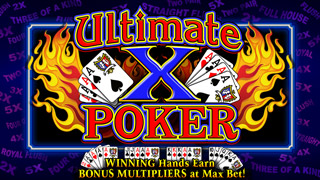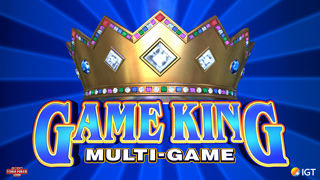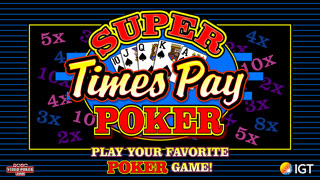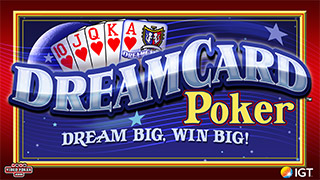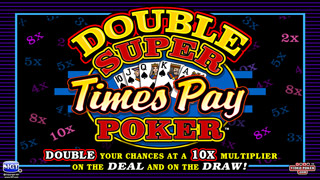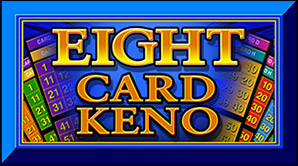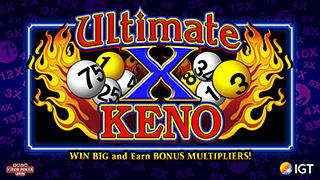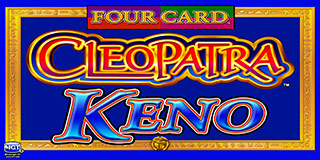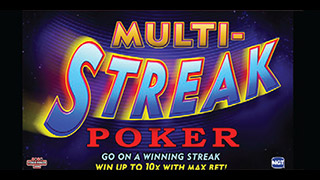Haywire
-
Tedlark
- Video Poker Master
- Posts: 8681
- Joined: Mon Oct 02, 2006 12:29 am
I calculate that congratulations are in order for you.
-
royal flush
- Video Poker Master
- Posts: 1117
- Joined: Fri Nov 10, 2006 12:50 pm
nice hit
-
Vman96
- Video Poker Master
- Posts: 3298
- Joined: Tue Jul 26, 2011 12:49 am
A gold member might be able to find out. I thought they provided multiple paytables and percentages to gold members on this site. I'm not a gold member though. :(
Congrats on the hit!
Congrats on the hit!
-
prozema
- Forum Newbie
- Posts: 5
- Joined: Sat Feb 11, 2017 7:09 pm
Thanks so much. I'm thinking that the haywire feature adds a good amount of return to the base pay table and you still use standard strategy for the base game. I wish I knew how to validate that.
-
New2vp
- Video Poker Master
- Posts: 1859
- Joined: Mon Sep 11, 2006 4:02 am
I have no inside knowledge. And I have only played Haywire on line a little bit. If the multipliers are equally likely, it looks like the longterm EV is the base game EV multiplied by about 1.0020. ( .1149 × 6.25 + .8851 × 1) / 1.6 = 1.603225÷1.6 = 1.002015625. The 1.6 divisor is due to the 8-coin bet size (8/5 = 1.6).
The very small sample of multipliers that I saw did not cause me to conclude that the probabilities were unequal, but they certainly still could be.
There is generally going to be a start up deficit to this EV if you start with a board with no multipliers. All the hands except the first one will have a multiplier of only 1, while you make those initial 8-coin bets for unmultiplied 5-coin payouts.
If this turns out to be right, the add-on (or multiply-on) is similar but a little smaller than the EV enhancement for Super Times Pay.
The very small sample of multipliers that I saw did not cause me to conclude that the probabilities were unequal, but they certainly still could be.
There is generally going to be a start up deficit to this EV if you start with a board with no multipliers. All the hands except the first one will have a multiplier of only 1, while you make those initial 8-coin bets for unmultiplied 5-coin payouts.
If this turns out to be right, the add-on (or multiply-on) is similar but a little smaller than the EV enhancement for Super Times Pay.
-
New2vp
- Video Poker Master
- Posts: 1859
- Joined: Mon Sep 11, 2006 4:02 am
Vman, there are no custom paytables as yet for this game, so gold members do not see any game EVs.
-
prozema
- Forum Newbie
- Posts: 5
- Joined: Sat Feb 11, 2017 7:09 pm
New3vp,
Thank you!
How did you come to the 6.25 number? I would think that number would be different whether you are playing 3, 5, or 10 play based on how long them multipliers stay around and how many 1X bets there are?
Thank you!
How did you come to the 6.25 number? I would think that number would be different whether you are playing 3, 5, or 10 play based on how long them multipliers stay around and how many 1X bets there are?
-
New2vp
- Video Poker Master
- Posts: 1859
- Joined: Mon Sep 11, 2006 4:02 am
How did you come to the 6.25 number?
If the multipliers are equally likely ...
(2 + 3 + 4 + 5 + 6 + 8 + 10 + 12) / 8 = 50/8 = 6.25. If the multipliers are equally likely, each non-1 multiplier would have equal probability of occurring (8 possible multipliers, each with probability 1/8). In that case, a simple average of the possibilities would determine the multiplier's expected value.I took a relatively small sample of multipliers (only 54) and performed a statistical test known as a chi-squared goodness-of-fit test. I could not reject what is referred to as a "null hypothesis" that the probabilities were equal. As I stated, this is not proof that the probabilities are equal. But since the calculation only adds about 0.2% to the EV, it seemed reasonable that the casinos and game makers would be satisfied with such an amount. So, it remains a guess. Whether you want to call it an educated guess or not is up to anyone's opinion.Many times the probabilities of possible values are NOT equal. The probabilities are often higher for the lower values and lower for the higher values, just like you see with most video poker payouts. You can note this on many wheel games. In my very small sample, I found only 4 instances of a multiplier of 2x and saw 7 instances of 12x. So, it did not appear to suggest that high multiplier values were relatively unlikely.If you assume equal probabilities of possible outcomes with many wheel games, one finds that a simple average of awards yields unrealistically optimistic expected value for the player, which of course would mean losses for the casino. If the final calculation for Haywire resulted in too much EV, I would be more skeptical of such an assumption.But of course, the idea of equal probabilities still remains a guess.I would think that number
would be different whether you are playing 3, 5, or 10 play based on how
long them multipliers stay around and how many 1X bets there are?
Whether it is 3-play, 5-play, or 10-play, the stream of multipliers starts with the first hand and proceeds to each following hand in succession. So, the expected value of the multiplier for the 1st hand is the same as the expected value of the multiplier for the next hand, the middle hand, the last hand, or any hand in between. There is a lag, but one can predict perfectly whether there will be multipliers on all the hands except the first for each next play.Edit: It is certainly possible that the manufacturers could have programmed separate multiplier distributions for which hand since the non-unit multipliers change. And I did not try to test for that. It doesn't seem that there would be much benefit to that as it would make the programming more difficult and not add anything to the concept of the game. But the PROPORTION of hands that will have multipliers will be the SAME on each of the hands (the help screen says 11.49%). And there is no compelling reason to make the programming more difficult (except for the conspiracy theorists looking for sinister motives. However, even if that were the case, my tracking the numbers would still reveal whether or not to reject that the OVERALL average was different, so I would still have the same conclusion about the effect on the overall game EV.).So, unless the distributions are different, the expected value of the multiplier of the 2nd hand has to be the same as that of the first hand. Though of course the outcomes in any set of hands will most likely not be exactly equal to the expected value (whether it is 6.25 or not), as the number of hands increases, we would see that any set of sample averages would get closer to the expected values. If you want to perform this experiment on your own, you can observe this for yourself.And we will see that the average for the outcomes for the 2nd hand will get closer and closer over time to the average for the first hand. Note that over any finite sequence of hands, the actual average may be slightly different depending upon the number of hands played, the starting set of multipliers, and the outcomes of multipliers along the way. But the long-term expected value for each of the n hands (n = 3, 5 or 10) is equal.
-
New2vp
- Video Poker Master
- Posts: 1859
- Joined: Mon Sep 11, 2006 4:02 am
And thanks for the promotion to New3vp!!



